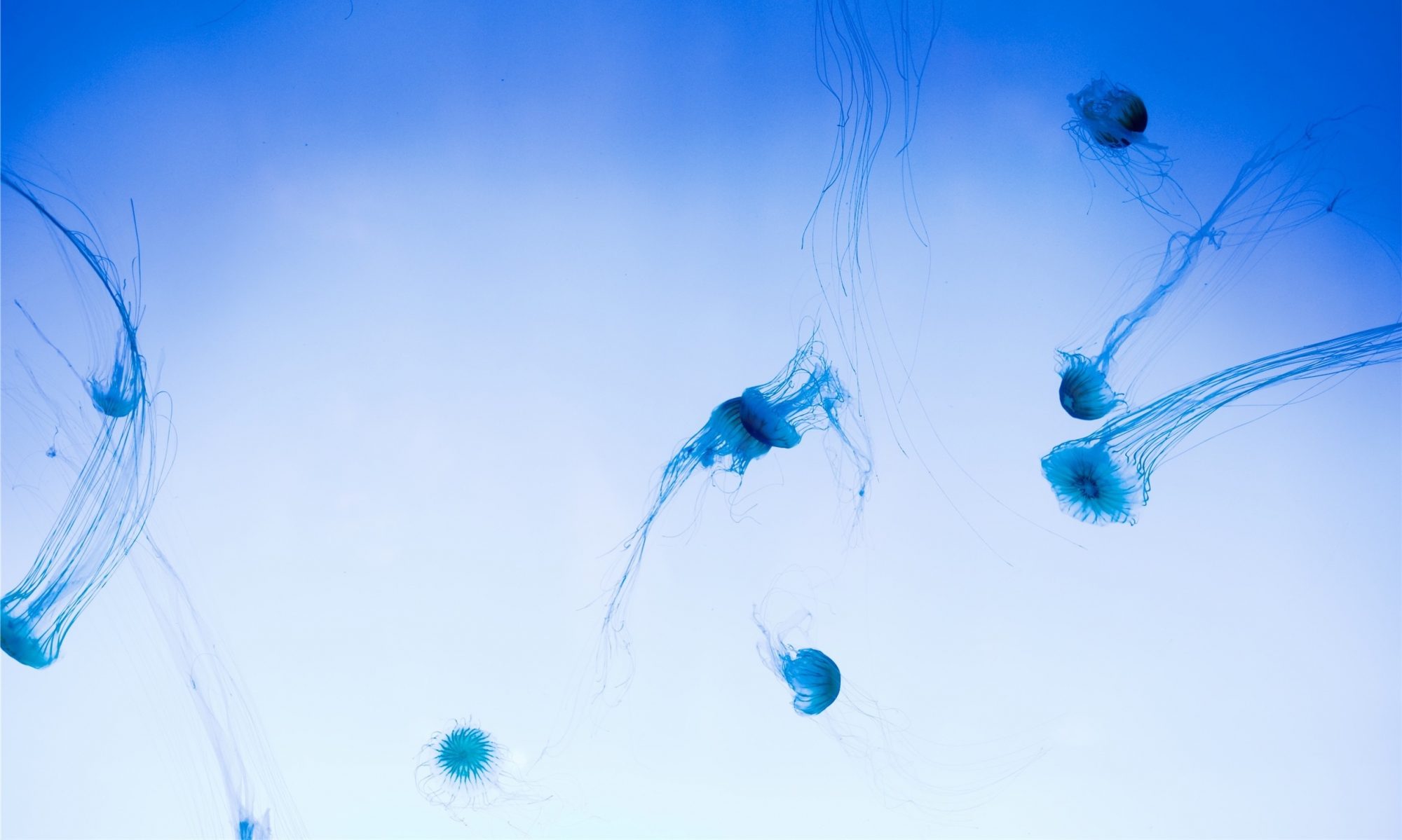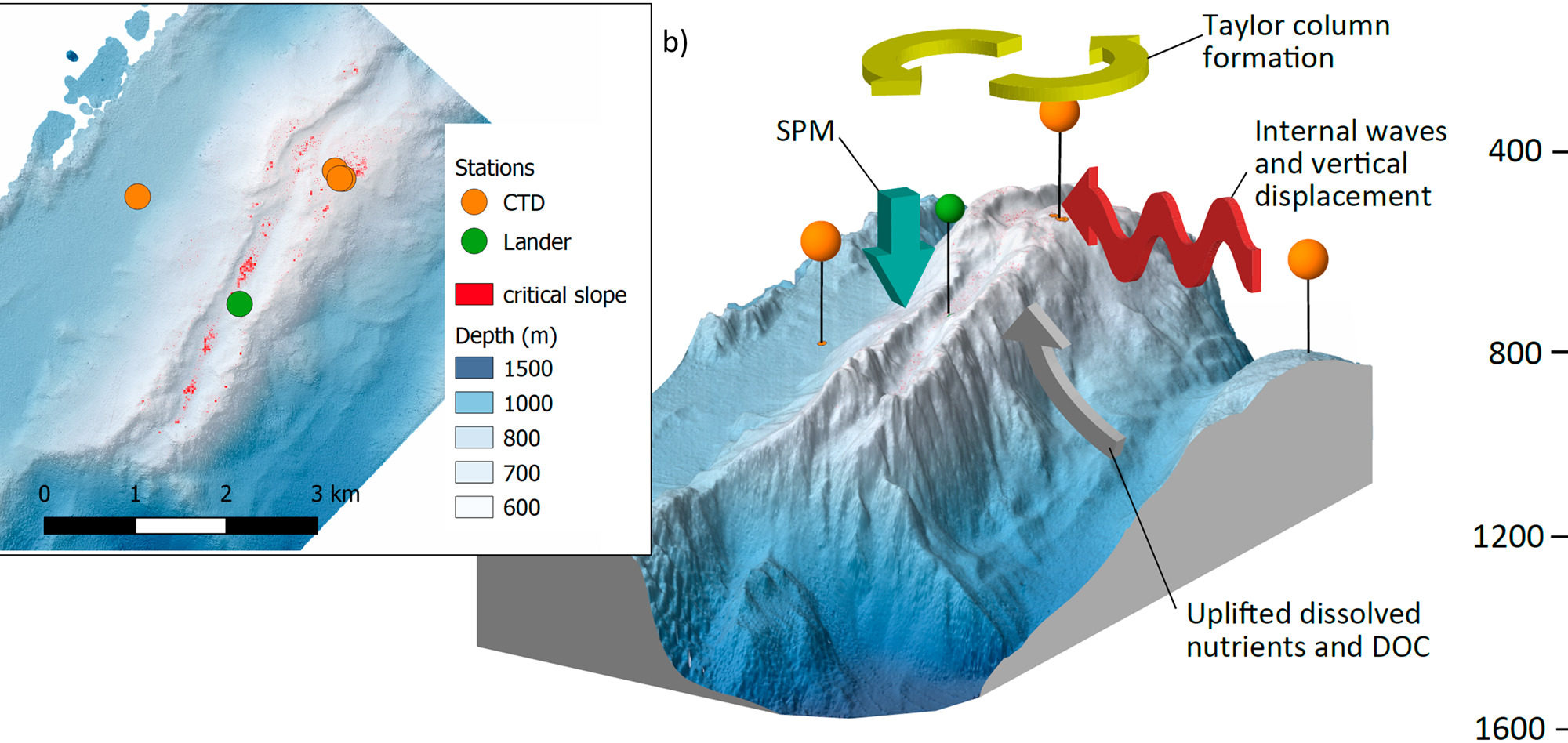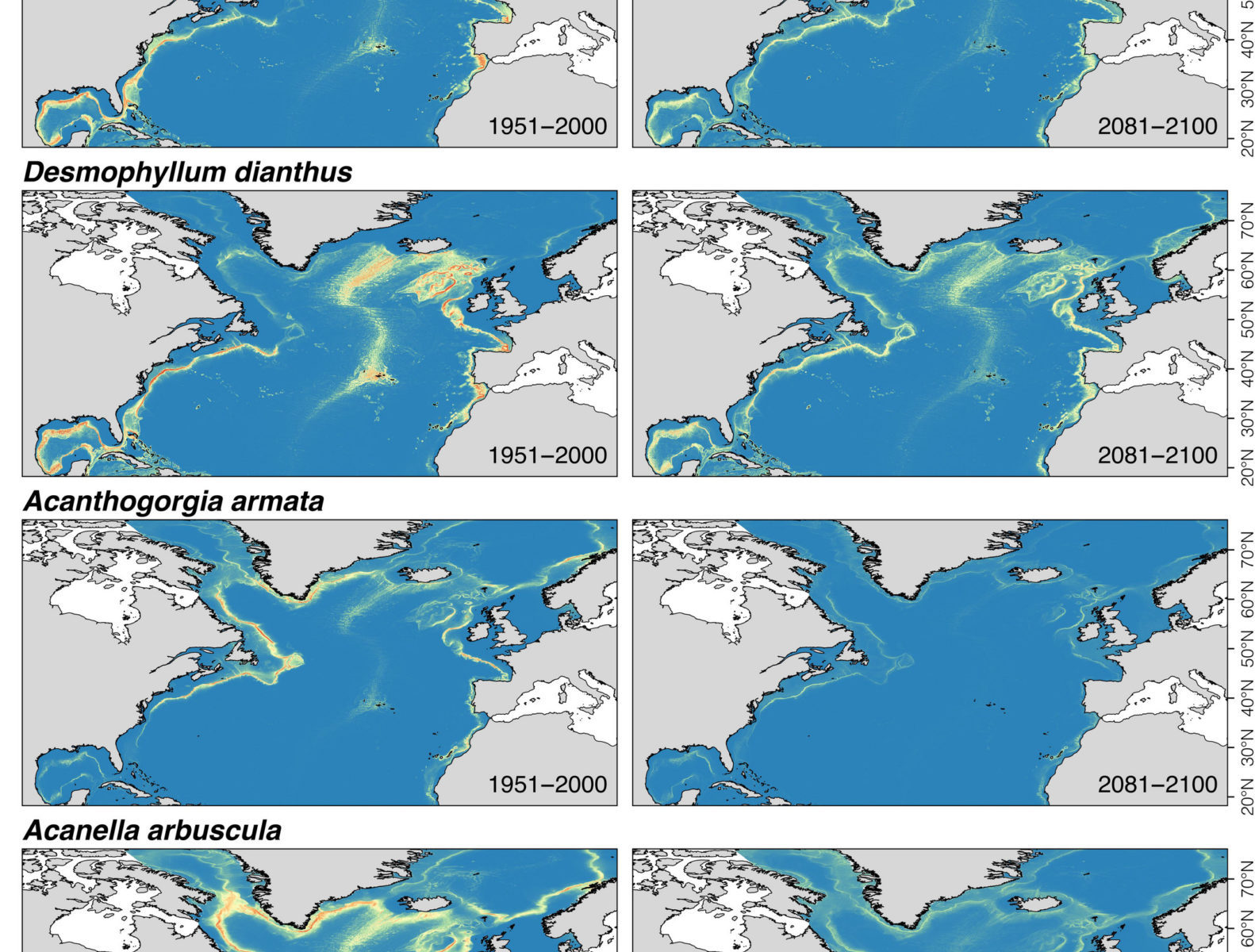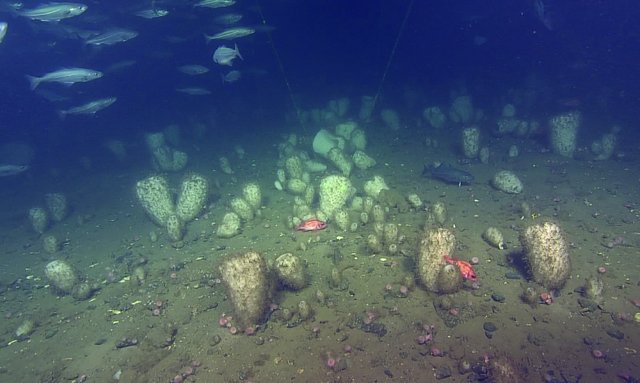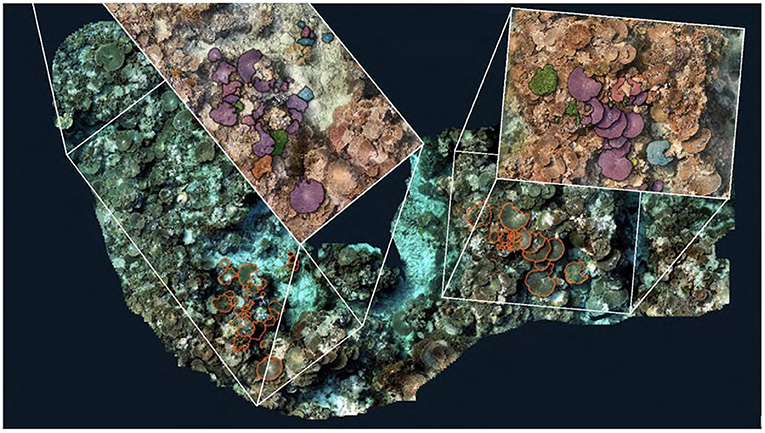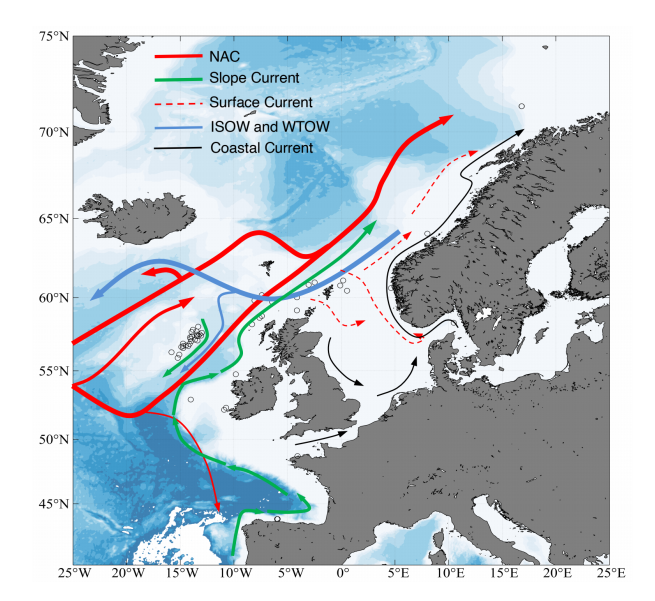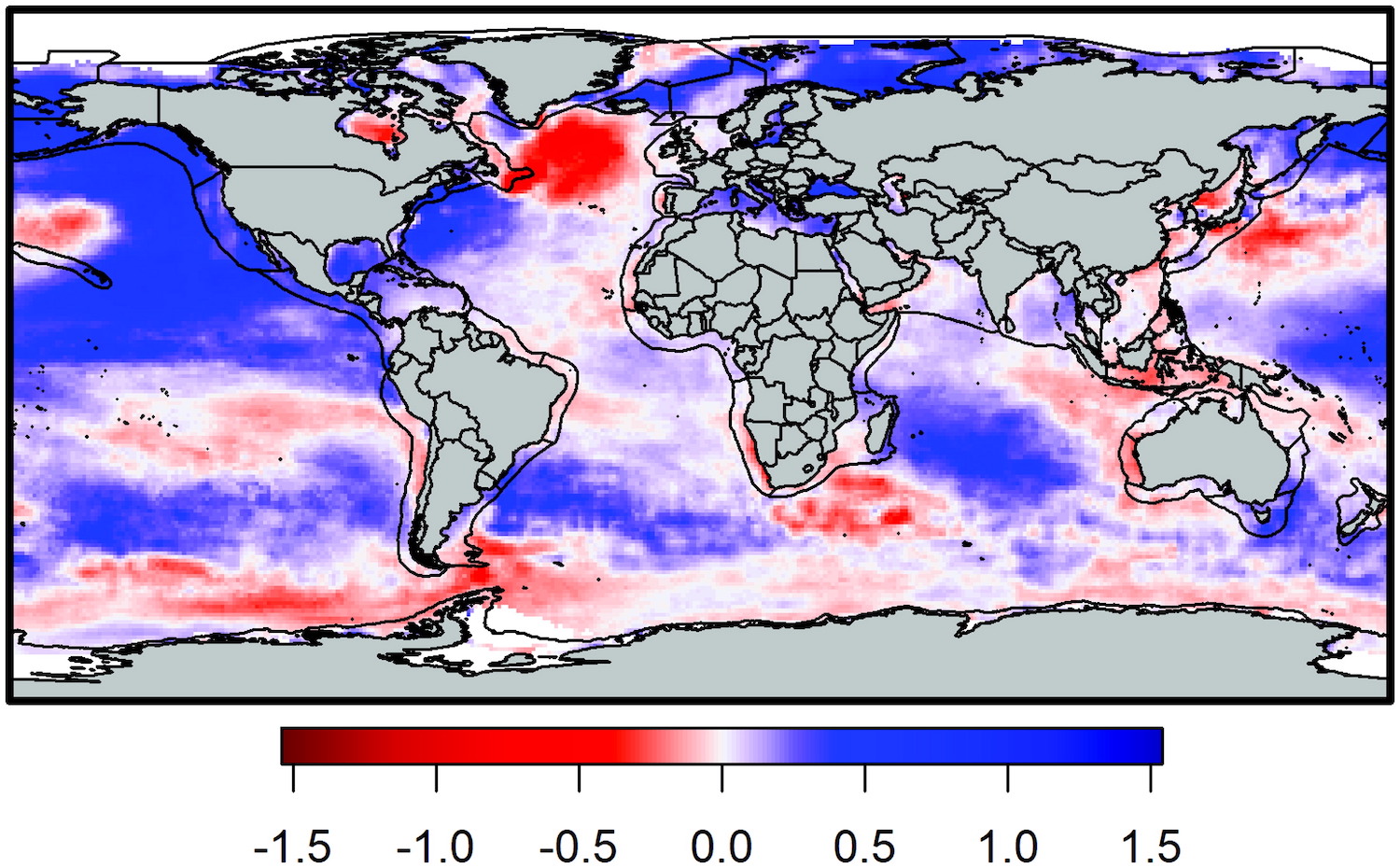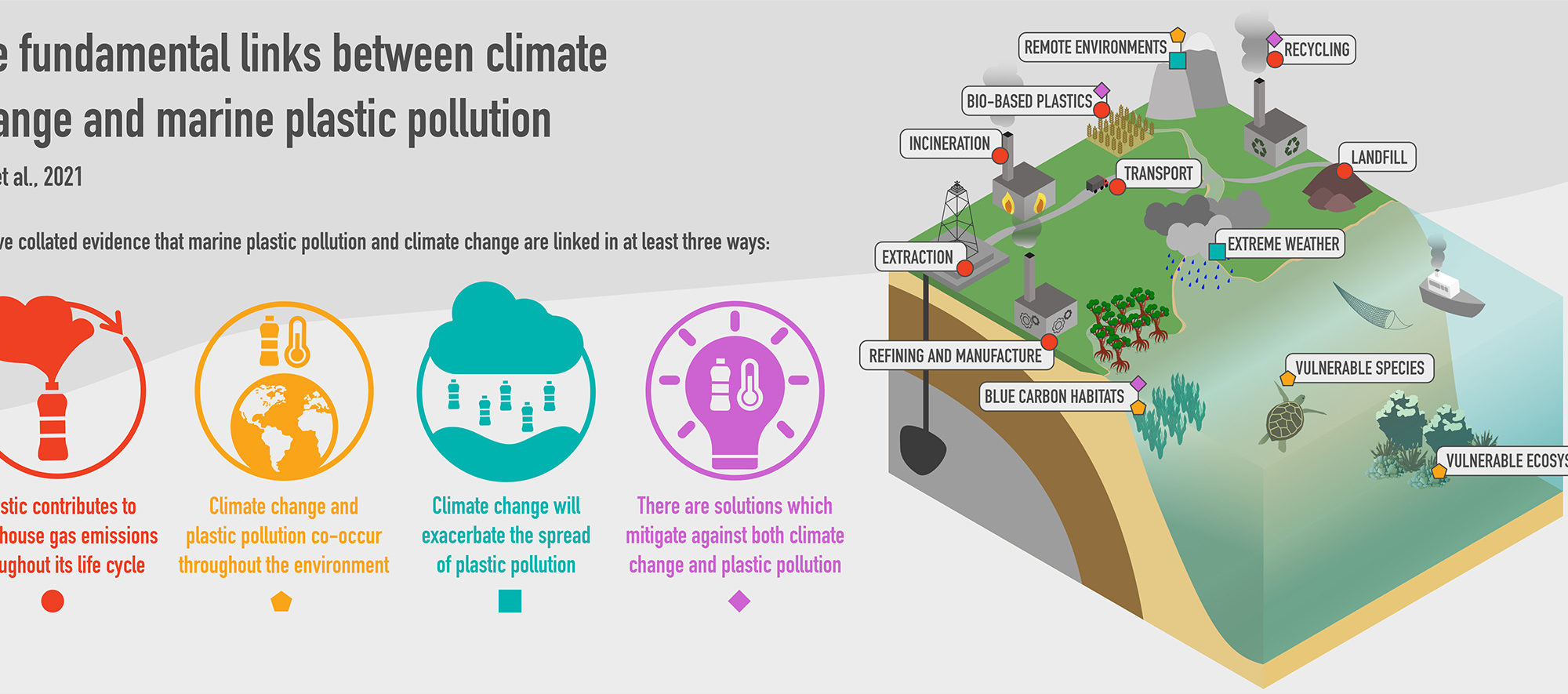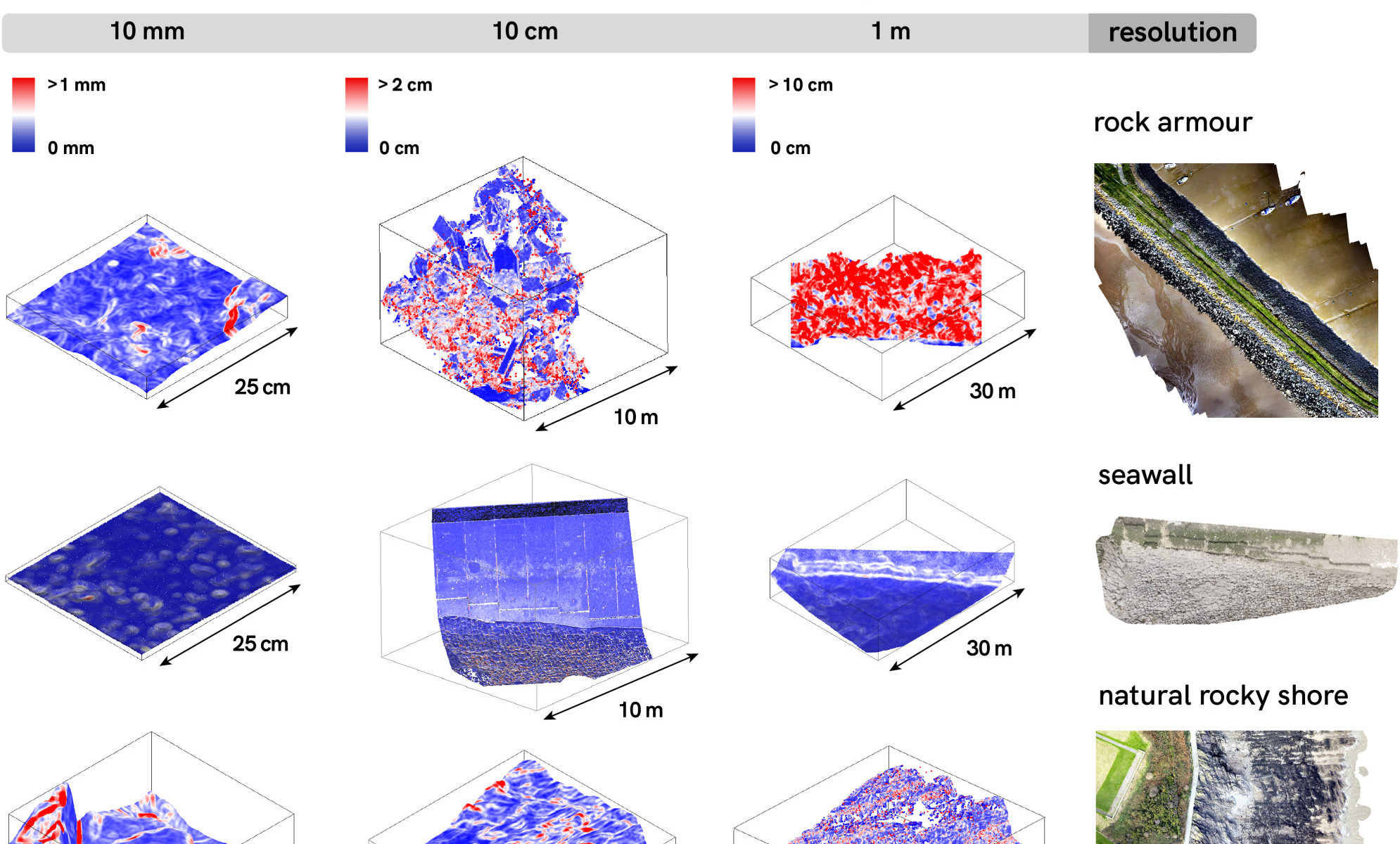Long‐term Observations Reveal Environmental Conditions and Food Supply Mechanisms at an Arctic Deep‐Sea Sponge Ground
Ulrike Hanz, Emyr Martyn Roberts, Gerard Duineveld, Andrew Davies, Hans van Haren, Hans Tore Rapp, Gert‐Jan Reichart, Furu Mienis
Abstract
Deep‐sea sponge grounds are hotspots of benthic biomass and diversity. To date, very limited data exist on the range of environmental conditions in areas containing deep‐sea sponge grounds and which factors are driving their distribution and sustenance. We investigated oceanographic conditions at a deep‐sea sponge ground located on an Arctic Mid‐Ocean Ridge seamount. Hydrodynamic measurements were performed along Conductivity‐Temperature‐Depth transects, and a lander was deployed within the sponge ground that recorded near‐bottom physical properties as well as vertical fluxes of organic matter over an annual cycle. The data demonstrate that the sponge ground is found at water temperatures of −0.5°C to 1°C and is situated at the interface between two water masses at only 0.7° equatorward of the turning point latitude of semi‐diurnal lunar internal tides. Internal waves supported by vertical density stratification interact with the seamount topography and produce turbulent mixing as well as resuspension of organic matter with temporarily very high current speeds up to 0.72 m s−1. The vertical movement of the water column delivers food and nutrients from water layers above and below toward the sponge ground. Highest organic carbon flux was observed during the summer phytoplankton bloom period, providing fresh organic matter from the surface. The flux of fresh organic matter is unlikely to sustain the carbon demand of this ecosystem. Therefore, the availability of bacteria, nutrients, and dissolved and particulate matter, delivered by tidally forced internal wave turbulence and transport by horizontal mean flows, likely plays an important role in meeting ecosystem‐level food requirements.
[sendpaper paperurl=”2021_Hanz.pdf”]
Full Citation
Hanz, U., Roberts, E. M., Duineveld, G., Davies, A., Van Haren, H., Rapp, H. T., Reichart, G. J. and Mienis, F. 2021. Long–term observations reveal environmental conditions and food supply mechanisms at an Arctic deep‐sea sponge ground. — Journal of Geophysical Research: Oceans 126: e2020JC016776. 10.1029/2020jc016776
